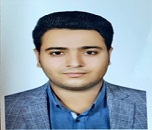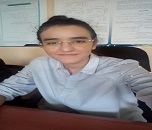Scientific Program
Keynote Session:
A PHP Error was encountered
Severity: 8192
Message: trim(): Passing null to parameter #1 ($string) of type string is deprecated
Filename: pastconference/past-program-schedule.php
Line Number: 239
Backtrace:
File: /efsdata/meetingsint-com/application/views/pastconference/past-program-schedule.php
Line: 239
Function: trim
File: /efsdata/meetingsint-com/application/controllers/Pastconference.php
Line: 128
Function: view
File: /efsdata/meetingsint-com/index.php
Line: 317
Function: require_once
Title: Using 3D printing for pre-planning of High Tibial Osteotomy
Biography:
Hamidreza Mosleh has 24 years old and he is a MSc student of Anatomical sciences at Iran university of medical sciences. His research interests include anthropology and radiology in anatomy
Abstract:
Recent developments in 3D printing have gave orthopedic surgeons among a novel technology that has the ability to revolutionize preoperative planning. The appearance of 3D printing technology enables the digital preoperative plan and simulation to move from the virtual phase to the reality phase. Varum disorders are recurrent lower limb malformations associated with many anatomical changes in the knee joint and adjacent segment. High Tibial osteotomy is one of the best treatment options in genuvarus deformity. In this randomized clinical trial study, 16 patients with genuvarum were selected that divided between the 2 groups (main study and the control group). A standing alignment radiograph were taken from all patients to measure mMPTA, mLDFA, CA and mFTA. CT scan was taken from 8 patients in the main study group. Mimics software was used to build the 3D model. Then, we had to prepare the model made for printing by a 3D printer. Finally, the printed 3D model is provided to the orthopeadic surgeon. So, the surgeon operated on half of the patients with the help of a printed 3D model. Orthoped performed an osteotomy on the printed model that was exactly the same as the actual surgery After the surgery, we once again took radiography (all patients) and a CT scan (main study group). The aim is to see if the angles have been corrected after surgery. Finally, a comparison was made between these two surgical procedures. Results showed that the printed 3D model group had lower: 1. cost of hospitalization and anesthesia, 2. duration of surgery, 3. fluoroscopic dose and 4. bleeding.
A PHP Error was encountered
Severity: 8192
Message: trim(): Passing null to parameter #1 ($string) of type string is deprecated
Filename: pastconference/past-program-schedule.php
Line Number: 239
Backtrace:
File: /efsdata/meetingsint-com/application/views/pastconference/past-program-schedule.php
Line: 239
Function: trim
File: /efsdata/meetingsint-com/application/controllers/Pastconference.php
Line: 128
Function: view
File: /efsdata/meetingsint-com/index.php
Line: 317
Function: require_once
Title: Theoretical study of selective laser sintering of polyamide 12
Biography:
Hanane YAAGOUBI : was born in morocco on 24th april 1992. state engineer diploma (mechanical design and innovation) , FST FES, sidi mohamed ben abdellah university in FES and she is currently a PHD student in the laboratory of applied mechanics and technologies ( LAMAT), ENSET,STIS research center mohammed V university-Rabat, Morocco , Her research is focused on printing 3D.
Abstract:
The laser sintering process allows to create a wide range of parts printed in 3 dimensions (3D). 3D printing is done layer by layer on powders (plastics, juices, polymers), using a laser. SLS printing requires the use of a special gas, nitrogen, SLS 3D printers are made from two enhancement chambers The laser draws the case of each region of the 3D drawing on a bed of powder. Each time a diaper is made, the bed breaks and another diaper is made over the previous layers The bed continues to descend until the last layer is formed and the part is complete, one of the fundamental points of interest of SLS is that it does not need the help structures used by many people. many other manufacturing innovations of added substances to prevent the plane from falling off during creation. The article rests on a bed of powder, no help is fundamental SLS innovation really stands out when you need durable plastic parts. It is equipped to deliver fully solid parts suitable for real life testing and mold making, while other added substance production strategies can become tricky after a while; so mathematical modeling to properly optimize this process is necessary.



